Indoor Bodyweight Exercises for Musculoskeletal Health
As the cold winter weather persists in our region, it's a good time to find ways to stay active indoors. Whether your goal is to start a fitness-focused New Year's resolution or to maintain joint and muscle health through the winter months, bodyweight exercises offer an effective and accessible solution. You don’t need fancy equipment or a gym membership—just a little space and some motivation to get moving!
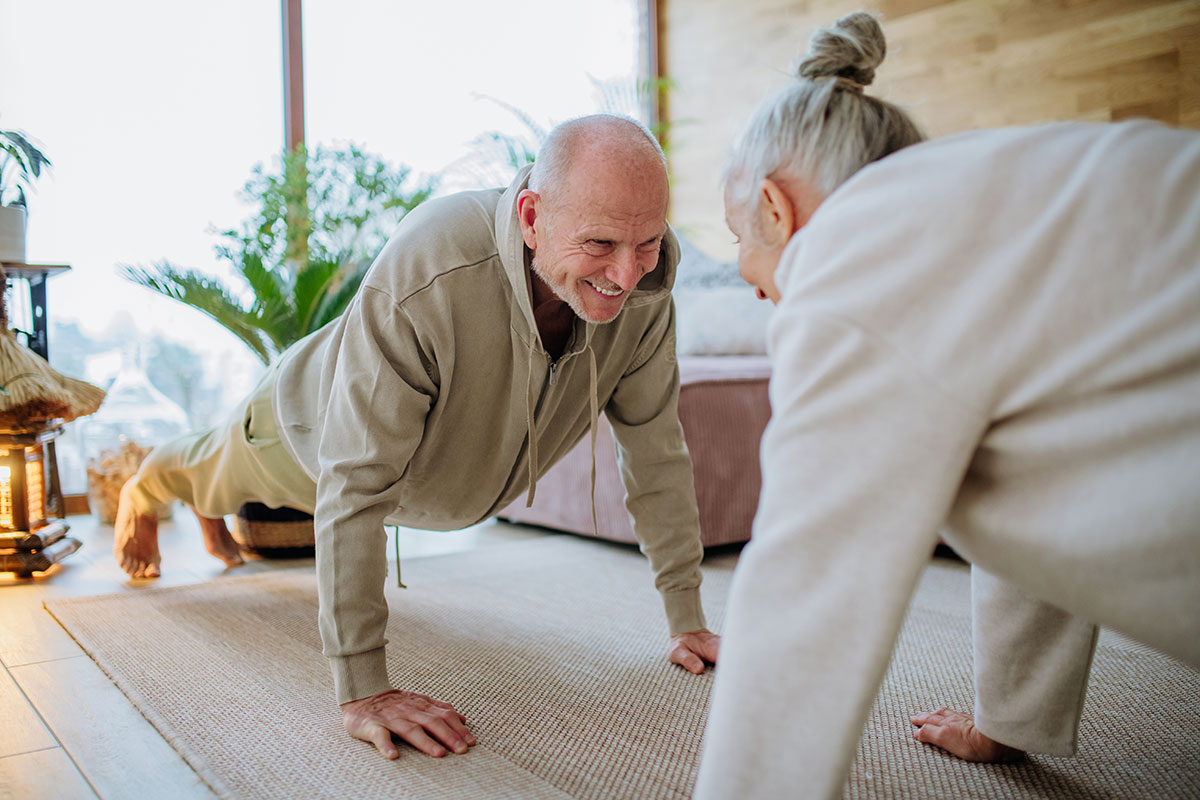
Here’s a comprehensive guide to some of the best bodyweight exercises you can do at home to support your musculoskeletal health this winter.
What are bodyweight exercises?
Bodyweight exercises are a fantastic way to improve strength, flexibility, and overall joint health without needing equipment. These exercises use your body’s own weight as resistance, making them ideal for home workouts. You can do these exercises by yourself or with friends and family of all ages. The benefits to your musculoskeletal health include:
Strengthens Bones and Muscles: Regular weight-bearing activities stimulate bone growth and help prevent conditions like osteoporosis.
Improves Joint Mobility: Exercises that target flexibility and stability can reduce stiffness and improve range of motion.
Enhances Core Stability: A strong core supports proper posture, reducing the risk of back pain and other musculoskeletal issues.
Warm-Up First
Before jumping into any exercise routine, it’s important to prepare your body with a warm-up. This increases circulation, loosens up your joints, and reduces the risk of injury.
Indoor Warm-Up Routine (5-10 minutes):
-
March in Place: Lift your knees high and swing your arms.
-
Arm Circles: Extend your arms and rotate them in small, then larger, circles.
-
Hip Circles: Place your hands on your hips and make circular motions with your pelvis.
-
Dynamic Stretches: Alternate lunges with a gentle twist to warm up your legs and spine.
Popular Bodyweight Exercises You Can Do Indoors
1. Bodyweight Squats
Squats are a powerhouse for strengthening your legs, glutes, and core. They also improve hip and knee mobility, making them essential for joint health.
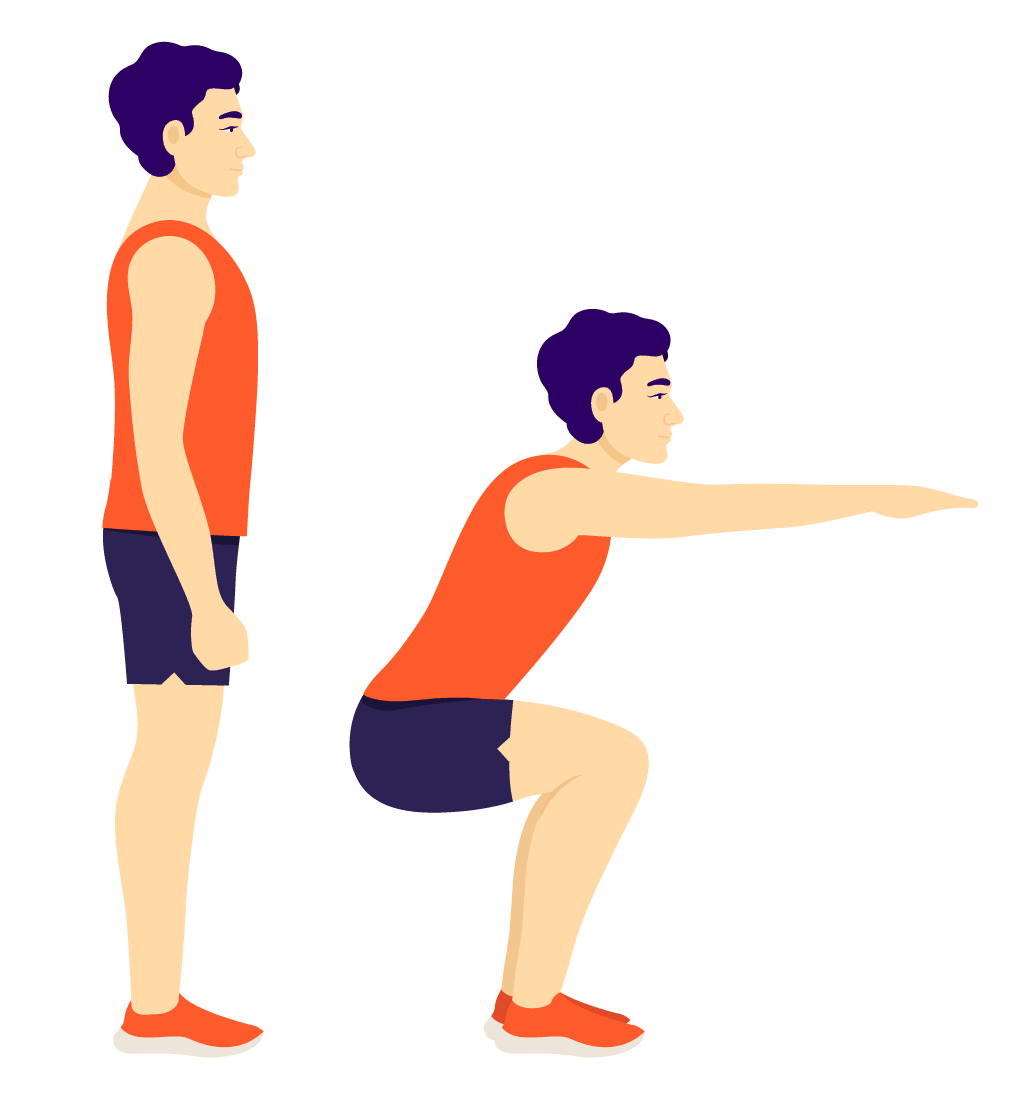
How to Do Bodyweight Squats:
-
Stand with your feet shoulder-width apart.
-
Lower your body as if sitting back into a chair, keeping your knees aligned with your toes.
-
Push through your heels to return to standing.
-
Perform 10-15 reps for 2-3 sets.
Modification: If needed, hold onto a chair or wall for support.
2. Plank
Planks are a full-body exercise that strengthens your core, shoulders, and back, all crucial for musculoskeletal stability.

How to Do a Plank:
-
Start on your hands and toes, with your body in a straight line from head to heels.
-
Keep your core engaged and avoid letting your hips sag.
-
Hold for 20-30 seconds, gradually increasing your time as you build strength.
Modification: Drop to your knees for a modified plank. Or rest your elbows and forearms on the floor.
3. Glute Bridges
This exercise targets your glutes and lower back while promoting hip mobility.
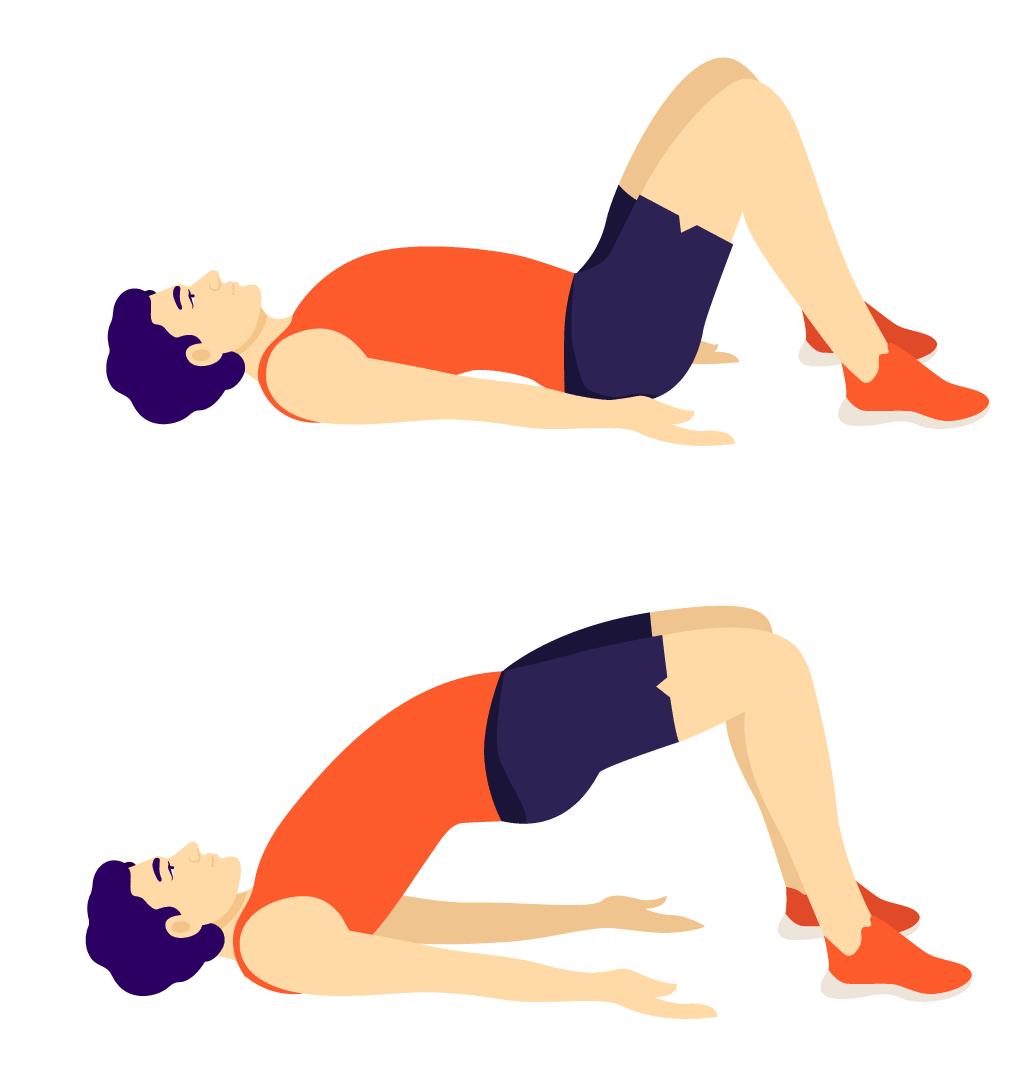
How to Do Glute Bridges:
-
Lie on your back with your knees bent and feet flat on the floor.
-
Press through your heels to lift your hips until your body forms a straight line from shoulders to knees.
-
Lower slowly and repeat for 10-12 reps.
Tip: Squeeze your glutes at the top for maximum benefit.
4. Push-Ups
Push-ups are a classic exercise for building upper body strength, engaging your chest, shoulders, and triceps, and core, while improving posture and joint stability. Push-ups also support bone density and cardiovascular health.
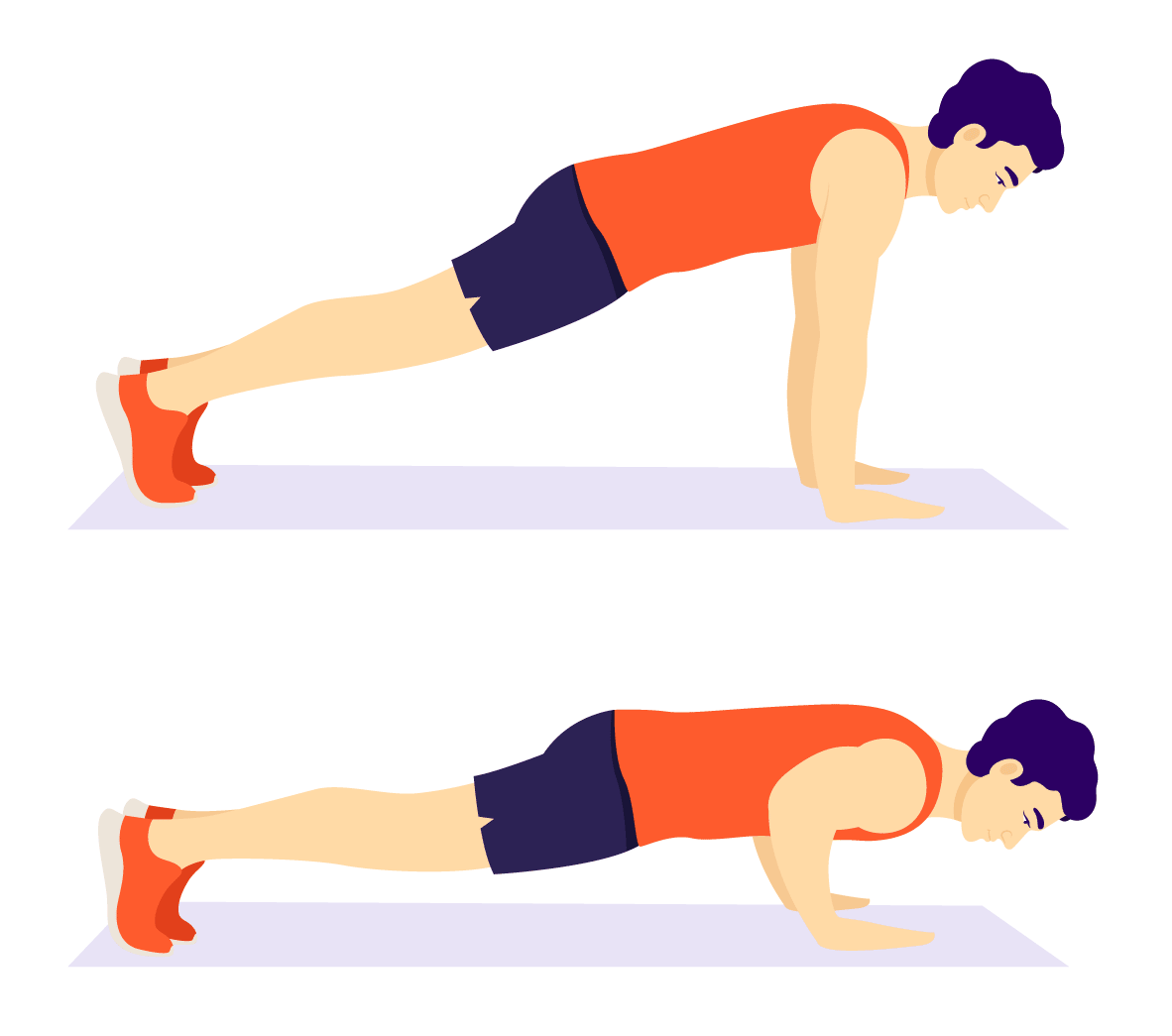
How to Do Push-Ups:
-
Start in a plank position with your hands slightly wider than shoulder-width.
-
Lower your chest to the floor, keeping your elbows at a 45-degree angle.
-
Push back up to the starting position.
-
Aim for 8-12 reps.
Modification: Perform push-ups on your knees or against a wall if full push-ups are challenging.
5. Lunges
Lunges improve lower body strength, balance, and flexibility. Lunges improve functional fitness by mimicking everyday movements like walking and climbing stairs, enhancing mobility and reducing the risk of injuries. They also promote joint health by increasing flexibility and stability in the hips, knees, and ankles.
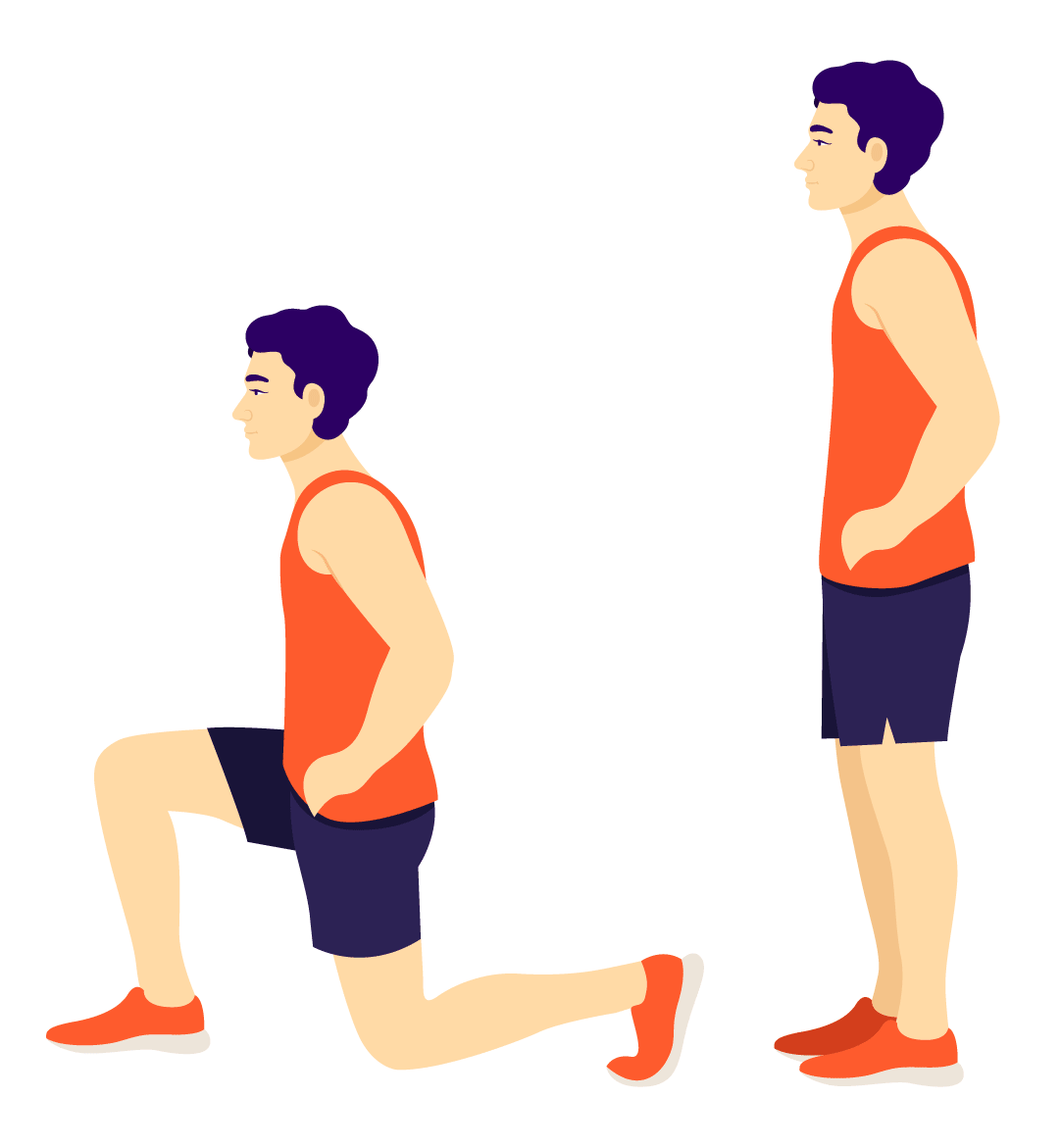
How to Do Lunges:
-
Stand tall and step one foot forward, lowering your back knee toward the ground.
-
Push through your front heel to return to standing.
-
Alternate legs for 10-12 reps per side.
Tip: Use a sturdy chair for balance if needed.
6. Cat-Cow Stretch
This yoga-inspired stretch enhances spinal flexibility and relieves tension in your back. This useful stretch promotes better posture by increasing awareness of spinal alignment and enhances mobility in the vertebrae, which can alleviate stiffness and prevent discomfort.
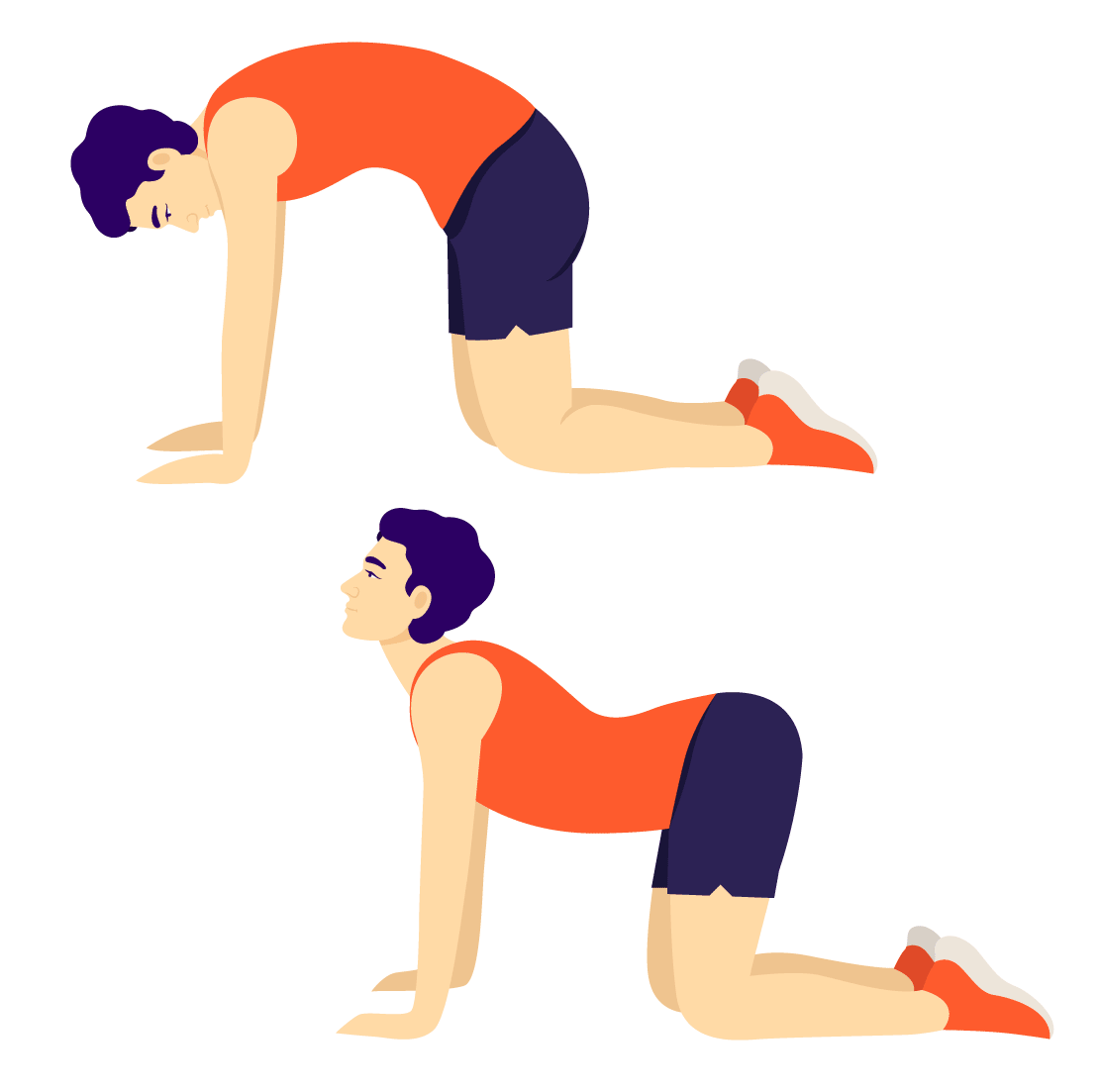
How to Do a Cat-Cow Stretch:
-
Start on your hands and knees in a tabletop position.
-
Inhale and arch your back (Cow Pose), lifting your head and tailbone.
-
Exhale and round your spine (Cat Pose), tucking your chin and pelvis.
-
Repeat for 8-10 cycles.
7. Wall Sits
Wall sits are excellent for building endurance in your lower body and strengthening your quads and glutes.

How to Do Wall Sits:
-
Stand with your back against a wall and slide down until your knees are at a 90-degree angle.
-
Hold the position for 20-30 seconds, gradually increasing time as you improve.
8. Bird Dog
This exercise improves balance and strengthens your core, lower back, and stabilizing muscles.
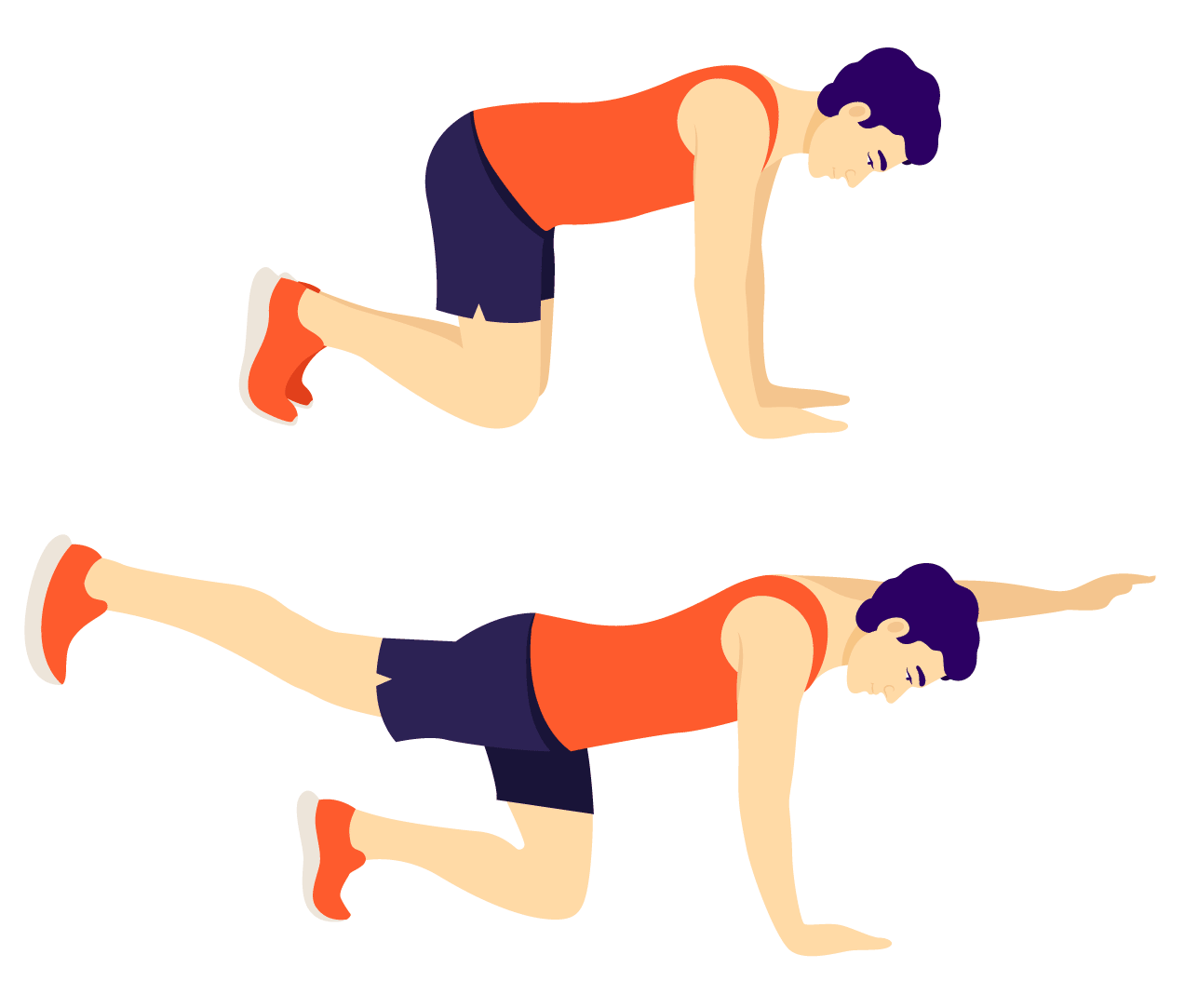
How to Do Bird Dog:
-
Start on your hands and knees.
-
Extend your right arm and left leg simultaneously, keeping your back flat.
-
Hold for a moment, then return to the starting position and switch sides.
-
Perform 8-10 reps per side.
Cool Down and Stretch
After completing your workout, spend a few minutes cooling down and stretching to enhance flexibility and prevent soreness. Here are a few cool-down stretches:
-
Hamstring Stretch: Sit on the floor with one leg extended and reach for your toes.
-
Child’s Pose: Kneel on the floor and stretch your arms forward while lowering your hips toward your heels.
-
Chest Opener: Clasp your hands behind your back and lift them slightly while opening your chest.
How To Stay Motivated
It's easy to start an indoor exercise routine, particularly as New Year Resolutions are fresh. But how do you stay motivated and stick with regular workouts? Here are a few tips:
-
Set Goals: Define what you want to achieve, whether it’s improving strength, increasing flexibility, or sticking to a routine.
-
Create a Dedicated Space: Find a comfortable area in your home for workouts, free from distractions.
-
Track Your Progress: Use a journal or app to log your exercises and monitor improvements.
-
Mix It Up: Rotate exercises to keep your routine engaging and target different muscle groups. If you fee like getting outside to exercise, be sure to stay safe and try to prevent injuries.
-
Involve the Family: Turn your indoor workout into a fun activity for the whole household.
Don’t let the cold weather keep you from staying active!
With a few bodyweight exercises, you can support your musculoskeletal health and start the year off on the right foot—all from the comfort of your home. These movements will help you build strength, flexibility, and resilience.
If you're experiencing joint pain, please contact a specialist at The Centers for Advanced Orthopaedics. Our doctors serve patients in Washington, D.C., Northern Virginia, and Maryland.

